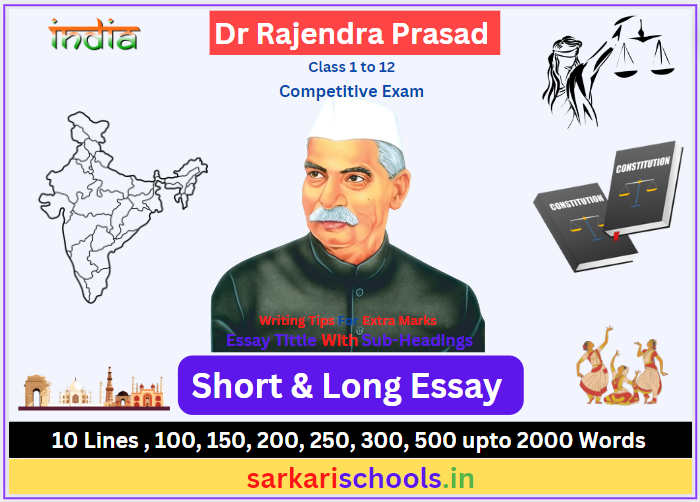Shantiniketan UNESCO World Heritage Site Recognition: Explore the cultural significance of Shantiniketan’s UNESCO World Heritage Site recognition in our informative article, delving into its rich history and legacy.”
Table of Contents

Santiniketan Declared UNESCO World Heritage Site
In a historic announcement, Santiniketan, the renowned cultural and educational center, has been officially declared a UNESCO World Heritage Site. This prestigious recognition solidifies Santiniketan’s place among the world’s most cherished cultural and historical landmarks.
The UNESCO designation comes as a celebration of Santiniketan’s rich heritage, founded by the Nobel laureate Rabindranath Tagore in 1901. Here’s a closer look at what this recognition means for Santiniketan and the world:
A Nobel Laureate’s Vision Realized
Rabindranath Tagore envisioned Santiniketan as a place of enlightenment, where individuals could come together regardless of their cultural or religious backgrounds. His vision emphasized the unity of humanity, and this recognition by UNESCO is a testament to the enduring relevance of his ideas.
A Cultural Gem in Bengal
Santiniketan’s location in Bengal’s Birbhum district has long been celebrated for its contributions to art, culture, and education. Now, as a UNESCO World Heritage Site, it joins the ranks of other iconic Indian landmarks, underlining the significance of India’s rich heritage.
Preserving and Promoting Heritage
UNESCO’s recognition isn’t just an honor; it also comes with a commitment to preserve and promote Santiniketan’s heritage. This means that the institution’s unique traditions and historical significance will be safeguarded for generations to come.
A Journey of Cultural Significance
Santiniketan’s journey to UNESCO recognition was marked by years of dedicated efforts. Its inclusion on the World Heritage List was facilitated by a recommendation from the International Council on Monuments and Sites (ICOMOS), an influential body dedicated to preserving global heritage.
A Cultural and Educational Powerhouse
Santiniketan is home to Visva-Bharati University, one of India’s most prestigious educational institutions. The university’s diverse programs encompass a wide range of disciplines, from humanities and social sciences to fine arts and agricultural sciences.
A Proud Moment for India
With Santiniketan now being India’s 41st UNESCO World Heritage Site, the nation’s commitment to preserving its cultural treasures and sharing them with the world is reinforced. This recognition elevates India’s standing on the global stage.
In summary, Santiniketan’s declaration as a UNESCO World Heritage Site is a momentous occasion for India and the world. It not only honors Rabindranath Tagore’s vision but also ensures that Santiniketan’s cultural and educational contributions will continue to inspire and enlighten generations to come.
Shantiniketan UNESCO World Heritage Site Recognition
Founded by Rabindranath Tagore, Shantiniketan, a renowned institution in West Bengal, has achieved UNESCO World Heritage Site status.
Historical Roots
Founded in 1901 by Rabindranath Tagore in rural West Bengal, Santiniketan began as a residential school and art center rooted in ancient Indian traditions. It was driven by Tagore’s visionary belief in the unity of humanity, transcending religious and cultural divides.
The Birth of “Visva Bharati”
In 1921, Santiniketan evolved into a “world university” known as “Visva Bharati,” further emphasizing the concept of global unity and knowledge dissemination.
Architectural Uniqueness
Santiniketan’s architecture stands in stark contrast to the prevailing British colonial architectural styles of the early 20th century and European modernism. Instead, it embodies an approach toward a pan-Asian modernity.
Pan-Asian Modernity
This unique architectural style draws inspiration from ancient, medieval, and folk traditions spanning across the Asian region. It symbolizes a harmonious blend of diverse cultural and architectural elements.
UNESCO Recognition
During the 45th session of the World Heritage Committee in Riyadh, Saudi Arabia, Shantiniketan was officially included in the UNESCO World Heritage List, marking it as the 41st site in India and the third in West Bengal to receive this honor.
Tagore’s 150th Birth Anniversary
The celebration of Rabindranath Tagore’s 150th birth anniversary in 2010 played a pivotal role in Shantiniketan’s UNESCO recognition.
Embodying Tagore’s Vision
Shantiniketan’s UNESCO dossier highlighted its close connection with Tagore’s life, work, and visionary ideals, as well as its commitment to global cooperation, environmental stewardship, and modern Asian aesthetics.
Distinct Approach to Art Education
Shantiniketan’s unique approach to art education, combining elements of Bauhaus, German expressionism, and Mingei, sets it apart as a human-centered and open-minded institution.
Preservation and Conservation
India presented a comprehensive plan to UNESCO, demonstrating its commitment to preserving Shantiniketan. The property, spanning 36 hectares, will be conserved and protected by the Archaeological Survey of India (ASI), with an additional 537-hectare buffer zone regulated by ASI to prevent construction activities.
Celebration and Acknowledgment
Shantiniketan’s UNESCO recognition was met with joy and a campus-wide celebration. Indian Prime Minister Narendra Modi and West Bengal’s Chief Minister, Mamata Banerjee, acknowledged its significance.
Evolution into Visva-Bharati University
Over the years, Shantiniketan has transformed into the globally recognized Visva-Bharati University, continuing to embody Tagore’s vision.
Global Heritage Preservation
Shantiniketan joins the ranks of other UNESCO-listed sites, emphasizing the importance of preserving cultural and historical treasures worldwide.
A Historic Achievement
Years of dedication and research culminated in Shantiniketan’s UNESCO recognition, honoring its cultural and educational legacy for generations to come.
Santiniketan’s UNESCO World Heritage Status: A Milestone
Discover how Santiniketan, the esteemed cultural and educational institution founded by Nobel laureate Rabindranath Tagore, has achieved the prestigious UNESCO World Heritage status.
Introduction: Celebrating Santiniketan’s UNESCO Recognition
Santiniketan, the cultural and educational nucleus established by Nobel laureate Rabindranath Tagore, has secured a coveted position on UNESCO’s World Heritage List. This momentous recognition is a testament to India’s rich cultural heritage and the enduring legacy of this exceptional institution nestled in Bengal’s Birbhum district.
India’s Pursuit of UNESCO Designation for Santiniketan
India’s relentless efforts to obtain a UNESCO designation for Santiniketan, acknowledging its profound cultural and historical significance, have borne fruit. The decision to include Santiniketan on this esteemed list was made during the 45th session of the World Heritage Committee, held in Saudi Arabia, underscoring its global importance.
The Significance of UNESCO Recognition
A Triumph for Santiniketan
Inclusion in the UNESCO World Heritage List stands as a testament to Santiniketan’s cultural and educational eminence. This recognition reaffirms the imperative of preserving and propagating Rabindranath Tagore’s legacy and the institution he meticulously crafted.
India’s Prominence on the World Heritage Stage
India’s Rising Stature
With this latest addition, India has ascended to the sixth position on the World Heritage List, spotlighting the nation’s unwavering commitment to safeguarding its cultural and natural treasures. Santiniketan’s inclusion reinforces India’s role as a guardian of world heritage, proudly claiming its position as India’s 41st World Heritage site.
The Path to UNESCO Recognition
ICOMOS Recommendation: Paving the Way
Santiniketan’s journey to UNESCO recognition was paved by a crucial recommendation from the International Council on Monuments and Sites (ICOMOS), an international advisory body headquartered in France. Comprising professionals, experts, representatives from local authorities, companies, and heritage organizations, ICOMOS is dedicated to preserving and enhancing architectural and landscape heritage globally. Their endorsement played a pivotal role in Santiniketan’s quest for World Heritage status.
The Legacy of Santiniketan
A Spiritual Oasis
Santiniketan, originally conceived as an ashram by Rabindranath Tagore, served as a spiritual haven. It extended a warm welcome to individuals, regardless of their caste or creed, to contemplate before the singular Supreme Being. This inclusive ethos laid the foundation for what would evolve into a cultural and educational powerhouse.
Visva-Bharati University: A Hub of Excellence
Santiniketan proudly houses Visva-Bharati University, one of India’s most esteemed institutions. The university offers an array of degree programs encompassing humanities, social sciences, sciences, fine arts, music, performing arts, education, agricultural science, and rural reconstruction.
Tagore’s Vision
Founded by Rabindranath Tagore
Visva-Bharati was established by the visionary Rabindranath Tagore and later designated a central university and an institution of national importance through a parliamentary Act in 1951. Tagore’s vision of holistic education and cultural exchange continues to shape the institution’s ethos.
Prime Minister as Chancellor
Visva-Bharati holds a unique distinction as the sole central university of West Bengal, with the Prime Minister of India serving as its chancellor. This distinction underscores the university’s profound significance in the nation’s educational landscape.
In Conclusion: A Momentous Achievement
Santiniketan’s inclusion in UNESCO’s World Heritage List stands as a monumental achievement for India. It not only celebrates Rabindranath Tagore’s enduring legacy but also acknowledges the profound cultural and educational significance of Santiniketan and Visva-Bharati University. This UNESCO designation ensures the preservation and celebration of this cultural gem for generations to come.



